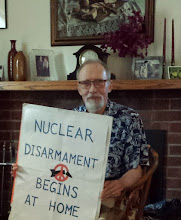Did Complex Life Begin in a Natural Nuclear Reactor?
Two unique events in world history are believed to have both taken place around 1.7 billion years ago. Might their coincidence in time explain why life as we know it exists?
The Emergence of Eukaryotes.
For more than 2 billion years, the only life forms that existed were the two domains of prokaryotes, the bacteria and the (slightly larger) archaea. Since their origin almost 4 billion years ago, these simple cells became so successful and adaptable that they haven't evolved greater size or complexity even to this day. Then all of a sudden, geologically speaking, there appeared about 1.7 billion years ago much larger and more complex single cells known as eukaryotes, the third domain of life (Ref. 1). Eukaryotes include every complex single-cell species and every multi-cellular species known today, characterized by much more complex biochemistry and cellular structure than those of the prokaryotic domains.
In Reference 1, author
The Only Known Natural Nuclear Reactors.
The other unique event in world history that took place about 1.7 billion
years ago was the onset of natural self-sustaining nuclear reactions at 16
sites in
A nuclear chain reaction, natural or otherwise, is only possible when at least
3% of uranium atoms are the fissionable isotope U-235. They can no longer occur in nature because
the decay rate of U-235 is much faster than the dominant isotope’s (U-238). In the last 1.7 billion years, the natural
abundance of U-235 fell from 3% to only 0.72%, much too low to sustain a chain
reaction.
How might these unique events be causally connected?
To understand how, consider that adenosine triphosphate (ATP), the
energy-storing molecule common to all life, is produced in very thin membranes
(6 nanometers thick) which are porous to the flow of protons in one direction
but not the other. The "respiratory chain" (oxidizing food, hydrogen
sulfide, or even ferrous iron!) drives protons in the porous direction until
the voltage drop across the membrane exceeds 150 millivolts. While this
sounds low, such voltage across such a thin membrane creates
lightning-bolt-high electric fields (25-30 million volts per meter), strong
enough to pull protons back through the membrane in the non-porous direction.
This reverse flow of protons powers the production of ATP by ATPsynthase
molecules, exquisitely complex protein nanomotors embedded in the membrane.
Every 10 protons rotate a nanomotor one complete turn, producing 3 ATP
molecules from 3 adenosine diphosphate molecules (
Bacteria and archaea are both limited in their size and complexity by the
limited area of their only membrane, the one that encloses most of the cell
just inside the cell wall. Given this constraint, these simple cells lack the
energy they would need to grow larger or more complex. Lane believes this
constraint was overcome when an archaeon somehow acquired a bacterium and
survived. Archaea are larger than bacteria, but the latter reproduce
faster, so an archaeon with bacterial parasites multiplying within is most
likely to burst. But in a sheltered, energy-and-mineral rich
environment, such as a porous mineral matrix through which hot water flows,
there's a chance that the archaeon and its endobacteria could mutate by sharing
Lane proposed an alkaline hydrothermal vent as the site where this took place. But such vents are numerous on the ocean floor, and have been around for billions of years, yet no other multicellular domains of life emerged from them. Why did this only happen once in 4 billion years, giving rise to only one domain of complex life?
Any of the natural nuclear reactors at Oklo might have provided a similar environment, exactly when the earliest eukaryotes emerged. Uranium in the absence of oxygen is insoluble, and before that time there was not enough oxygen for uranium to dissolve in water and percolate through sandstone to form the uranium ore layer. Shortly after that time the U-235 in the ore became too depleted to sustain fission. So if complex life had been kick-started by nuclear power, it would only have happened in a very narrow window of time (0.0004 billion years wide), 1.7 billion years ago. Translated into an a priori probability per unit time, that’s one domain of complex life per 400,000 years. Comparing to the a priori probability per unit time of it happening in alkaline hydrothermal vents (once per 4 billion years), it’s 10,000 times as many domains of complex life per unit time!
While these a priori probabilities are scientifically meaningless because they’re based on an event that happened only once anywhere, they suggest that the Oklo sites are well worth investigating as a possible birthplace of complex life as we know it. Is there an Evolutionary Biochemist in the House who agrees?
References
2. https://en.wikipedia.org/wiki/Natural_nuclear_fission_reactor
Labels: archaea, bacteria, biochemistry, eukaryotes, evolution, molecular biology, nuclear fission, Oklo


2 Comments:
such a small window of opportunity for life ! Any proof of this happening must have been mentioned in the Old Testament .....
Why? The Old Testament writers knew nothing about nuclear reactors, the age of life on Earth, or anything about science. They just made up stories to satisfy the curiosity of their readers.
Post a Comment
<< Home